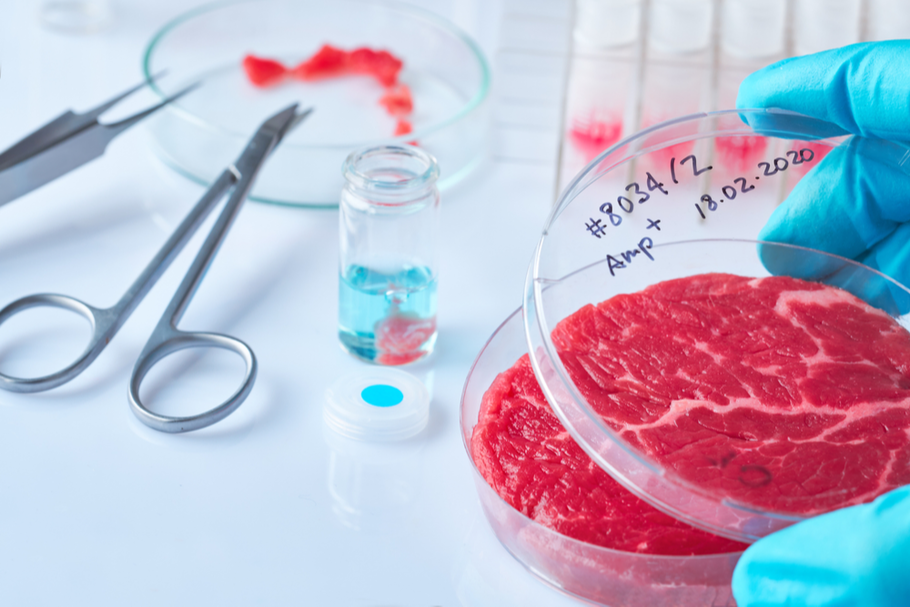How to Prepare for the Baby Food Safety Act
By Jackie Bowen
In February 2021, the results of a congressional investigation revealed levels of arsenic, lead and other toxic metals in many popular baby foods, including several organic brands. A U.S. House Subcommittee requested internal data from seven companies, including Walmart, Gerber, Beech-Nut, Earth’s Best Organics and Happy Family Organics. The documentation demonstrates worrisome levels of toxic metals in popular infant cereals, snack puffs and rice cakes – up to 91 times the arsenic level, 177 times the lead level, 69 times the cadmium level and five times the mercury levels established as acceptable by the Food and Drug Administation (FDA). This, as government, academics, and research outlets confirm and reference the short and long-term adverse health impacts that these toxins can have on the developing brain and immune system. The resulting parent and media backlash was swift and harsh with lawsuits, social media, and mainstream media outlets ablaze.
On March 25, Congress introduced the Baby Food Safety Act of 2021 in an effort to minimize toxic metals in foods targeting America’s most vulnerable populations. Once the act comes into effect, baby food manufacturers will have to comply with the following thresholds:
- Inorganic arsenic: 10 ppb for infant and toddler food; 15 ppb for infant and toddler cereal
- Cadmium: 5 ppb for infant and toddler food; 10 ppb for infant and toddler cereal
- Lead: 5 ppb for infant and toddler food; 10 ppb for infant and toddler cereal
- Mercury: 2 ppb
Once enacted, the levels would be revisited every 3-5 years, and where necessary lowered by regulation.
Following the announcement of the Baby Food Safety Act of 2021, the FDA released its “Closer to Zero” plan-the aim of which is to reduce toxins in foods eaten by children to as low as possible. The FDA outlined the four stages it will follow over the next three year to implement it’s Closer to Zero approach:
If you are a baby food manufacturer or a supplier to the baby food industry, here are some tips that you can implement in anticipation of this new regulation:
- Re-evaluate your HACCP and HARPC programs. Hazard Analysis and Critical Control Points (HACCP) is a method of identifying and managing food safety risks. Under the recent passing of the Food Safety Modernization Act (FSMA), the FDA now also has a legislative mandate to require comprehensive, science-based preventive controls across the food supply chain. This means that all food facilities that fall under FSMA must conduct Hazard Analysis and Risk-Based Preventive Controls (HARPC) and establish science-based preventive control measures to reduce the risk of food contamination. Heavy metals technically fall under chemical contaminants for both HACCP and HARPC. When was the last time you evaluated these programs with heavy metals in mind? Consider this a call to action.
- Conduct a risk analysis. As outlined in the congressional investigation, rice and root crops were highlighted as high-risk ingredients. Conduct a risk analysis of your formulation and consider your potentially problematic or high-risk ingredients and their final quantities in your product. Some products may need to be reformulated.
- Identify a qualified laboratory partner. The proposed thresholds are tight and many analytical chemistry laboratories may not have the necessary ISO 17025 accreditation. This should include applicable scope or sensitivities to confidently test to the specified levels. Re-examine the credentials of your current laboratory partner, and if necessary, make a switch. Look for an ISO 17025 accredited laboratory that can test to single digit parts per billion and has finished food products within their accreditation scope.
- Re-evaluate your supplier assurance program. As the quality adage goes, trust but verify. Many brands choose to rely on supplier provided certificates of analysis. Evaluate these for accreditation, sensitivities, levels of detection and levels of quantification. For example, a Certificate of Analysis might be quick and easy screening tool, but random sampling and testing will better ensure ongoing compliance.
- Monitor the evolution of the thresholds. The Baby Food Safety Act is still being debated, as regulators set final tolerance limits and test requirements. Follow platforms like GFSR and the FDA for updates to this regulation.
View compliance with federal laws as your compass. View compliance with the court of public opinion as your true north. In the case of heavy metals found in baby food, your customer, America’s families, have spoken.
About the Author
Jaclyn Bowen MPH MS is a food safety and quality systems engineer and executive director of Clean Label Project, a national non-profit and certification organization with the mission to bring truth and transparency to food and consumer product labeling. Through data, science, and benchmarking, Clean Label Project uses retail sampling and testing to benchmark product quality and purity of America’s best selling food and consumer products and award Clean Label Project’s coveted evidence-based Purity Award.

-
 FeaturedRisk management
The Cost of a Breach: What a Cyberattack Could Mean for Food Safety Recalls
FeaturedRisk management
The Cost of a Breach: What a Cyberattack Could Mean for Food Safety Recalls
-
 FeaturedRisk management
Securing the Food Chain: How ISO/IEC 27001 Strengthens Cybersecurity
FeaturedRisk management
Securing the Food Chain: How ISO/IEC 27001 Strengthens Cybersecurity
-
 FeaturedRisk management
Revolutionizing Food Safety Training: Breaking Out of the “Check-the-Box” Mentality
FeaturedRisk management
Revolutionizing Food Safety Training: Breaking Out of the “Check-the-Box” Mentality
-
 GFSI Standards
GFSI 2025: Building Trust, Tech-Forward Solutions, and Global Unity in Food Safety
GFSI Standards
GFSI 2025: Building Trust, Tech-Forward Solutions, and Global Unity in Food Safety
-
 FeaturedFood Safety
Integrated Pest Management: Strategies to Protect Your Brand’s Reputation
FeaturedFood Safety
Integrated Pest Management: Strategies to Protect Your Brand’s Reputation
-
 FeaturedFood Safety Culture & Training
No Open Door Policy: Challenges That Impact Pest Control in Food Processing Plants
FeaturedFood Safety Culture & Training
No Open Door Policy: Challenges That Impact Pest Control in Food Processing Plants




